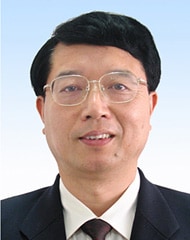Celebrating 50 Years of MS Innovation - User interviews May 2020
On the occasion of Shimadzu's 50th year of producing mass spectrometry instruments, we talk to researchers using Shimadzu MS instruments in their daily work and ask about their expectations for Shimadzu and the future of MS technology.

Prof. Wang Guangji
Academician, Chinese Academy of Engineering
Former deputy head of the China Pharmaceutical University
Main field of study:
Pharmacokinetics
1. How did you become familiar with Shimadzu?
The China Pharmaceutical University has a long history of collaboration with Shimadzu. In 1963, the university introduced a UV spectrophotometer produced by Shimadzu, and since then Shimadzu HPLCs, GCs etc. have become key analytical instruments here. 2001 saw the first single quadrupole LC/MS system in the university, the LCMS-2010, and beginning from that point each lab in the China Pharmaceutical University has brought in a few dozen Shimadzu LC/MS systems.
In September 2003, we established a centre for collaboration between Shimadzu and our university, a symbol of the high level of cooperative activity between us. Over these twenty years, our principle has been “mutual growth”, with this collaborative laboratory acting as a link to promote mutual benefit through the fusion of our technologies.
2. What is your main field of research, and how are you utilizing Shimadzu equipment?
My research is in pharmacokinetics, mainly focussing on the dynamics of Chinese and Western medicines as well as protein and polypeptide drugs inside the body. Recently we have also been looking into the absorption and transport of drugs on the cellular and subcellular level. Shimadzu instruments play an important role in our research. For example, the concentrations of drugs within cells or subcells are usually extremely low, so we use the high-sensitivity LCMS-8050 for quantitative analysis. Meanwhile, for Chinese medicines and protein-based drugs with complicated chemical compositions, we carry out measurements with the LCMS-IT-TOF. In addition, Shimadzu’s MS imaging technology allows us to visualize concentration distributions of drugs in target organs or cells.
3. What are your reasons for choosing Shimadzu equipment?
The main reason we choose Shimadzu instruments is down to the quality of the products. We have been using Shimadzu instruments for many years and have seen their robustness first-hand. For example, the LCMS-2010 that we have been using since 2001 is still working without any problems, and the LCMS-IT-TOF we introduced in 2005 is still going at full capacity. In addition, Shimadzu provides excellent after-service and their maintenance costs are low. The quality and response speed of Shimadzu’s field engineer service are both first-class.
4. What trends are you seeing in your field with regards to the use of mass spectrometry?
Right now, MS is a key analysis technology in the fields of metabolomics and proteomics. By improving the analytical capabilities and sensitivity of MS instruments, the efficiency and precision omics analysis can likewise be greatly improved. Therefore, I think that Shimadzu should put their efforts towards further increasing the capabilities and sensitivity of their MS instruments.
In addition, MS imaging is one of the technologies that has been gaining more attention in recent years. It has many applications in researching the metabolism, effectiveness and formulation of medical drugs. Optimization of spatial resolution and sensitivity will allow a wider range of applications for MS imaging technology.
5. What are your expectations for Shimadzu and for MS technology in general in the future?
First, I expect that Shimadzu will continue to expand, producing world-class software as well as hardware. I also hope they will continue to strengthen their collaborative activities with our university. Through mutual cooperation, we can continue to expand our industrial-academic collaborative research while fostering the development of new Shimadzu technologies.




